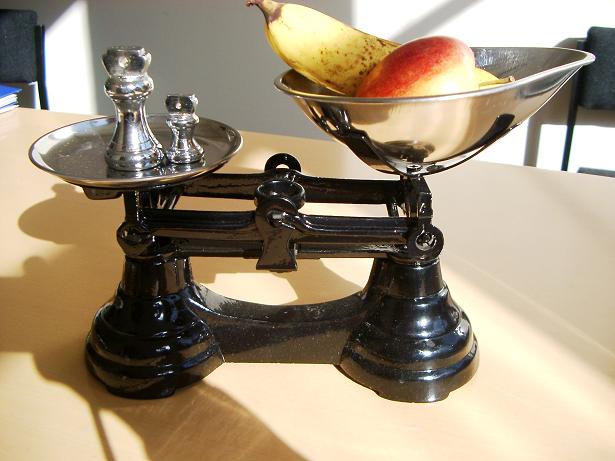An equilibrium kitchen scale

Fig.1-9 shows a kitchen scale that weighs an apple and a banana using the principle of equilibrium.
There is a pivot at the centre of the scale and a pair of arms can rotate about the pivot. The left and right arms are designed to be symmetrical about the central pivot. There are two other pivots at the ends of the left and right arms where two trays are placed. The two arms would be at the same level when an equilibrium state is achieved. The equilibrium equation for moment (the third equation in Eq. 1-1) can be used to give:
Where dL and dR are the distances between the central pivot and the left and right hand pivots of application of the weights. Due to the symmetry, dL = dR, the above equation thus states that the weight of the fruits is equal to the standard weights placed on the tray. The operation of the scale is thus based on the principle of equilibrium.
